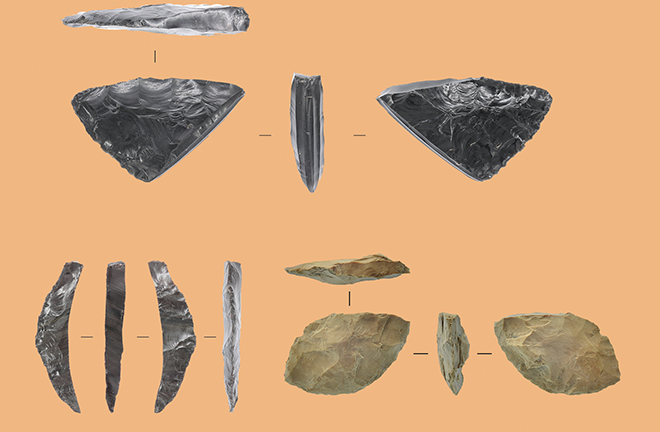Dadong site illuminates prehistoric Northeast Asia

FILE PHOTO: Stone tools unearthed from Dadong site
The Dadong Paleolithic site in Helong City, Jilin Province, occupies a crucial position in the prehistoric migration and cultural exchanges of Northeast Asia. Dating from 50,000 to 10,000 years ago, the site’s remains belong to a climactic phase in human history spanning over a million years. Particularly striking is the discovery of an extensive obsidian-based craftsmanship tradition—an exceptional find among Paleolithic sites in China.
Obsidian, a highly prized raw material for prehistoric humans, was not only fashioned into tools for daily use and production but also crafted into luxury items imbued with symbolic significance. Given its volcanic origin, obsidian’s sources can be traced with relative ease, making it a valuable marker for archaeologists studying early human migration, cultural diffusion, and the evolution of prehistoric trade networks. The Dadong site is unique in China for its intensive and widespread use of obsidian, making it an invaluable resource for research into these topics.
The site’s early phase, dating from 50,000 to 30,000 years ago, is characterized by a stone tool industry dominated by obsidian, with core-flake technology as its hallmark and a small presence of quartz tools. This indicates that the earliest inhabitants utilizing obsidian from the Changbai Mountain region were small flake-tool groups from North China, who had long been settled there. This discovery offers fresh insights into the emergence and development of modern humans in East Asia.
The second phase, around 28,000 to 24,000 years ago, witnessed the appearance of blade-like stone tools, suggesting the southward migration of groups from the Eurasian steppe, likely prompted by the harsh conditions of the Last Glacial Maximum. The simultaneous presence of microlithic tools provides critical evidence for understanding the origins of East Asian microlithic technology.
In the third phase, over 10,000 years ago, abundant cultural remains associated with the microlithic tradition of Northeast Asia’s northern regions mark the culmination of a million years of human history. This period signifies the transition from the Paleolithic to the Neolithic in northern China, heralding a new chapter in human prehistory.
Wang Youping is a professor from the Archaeology and Museology College at Peking University.
Edited by REN GUANHONG
